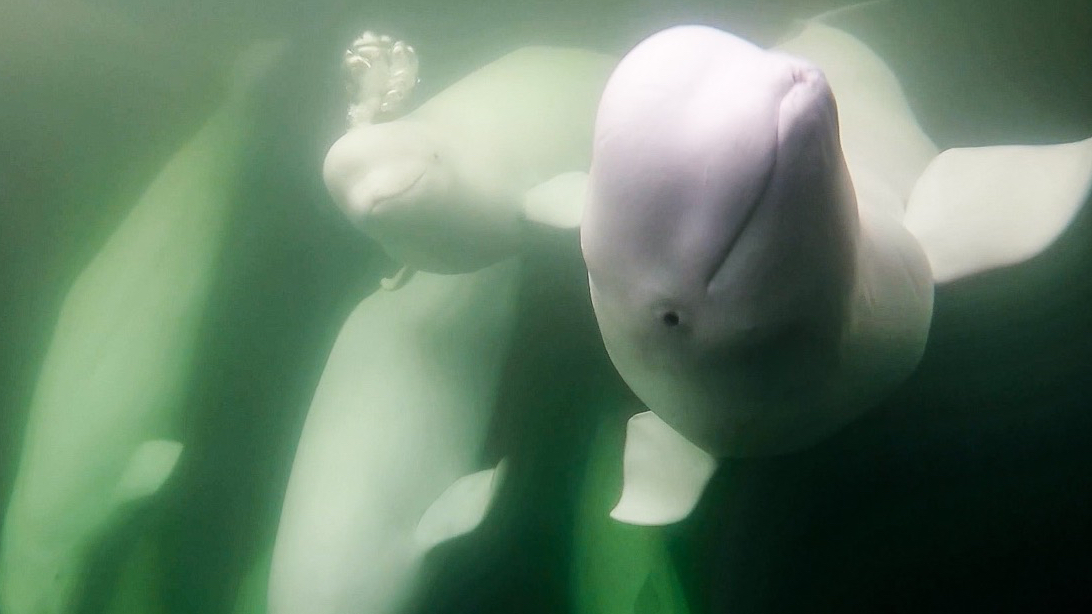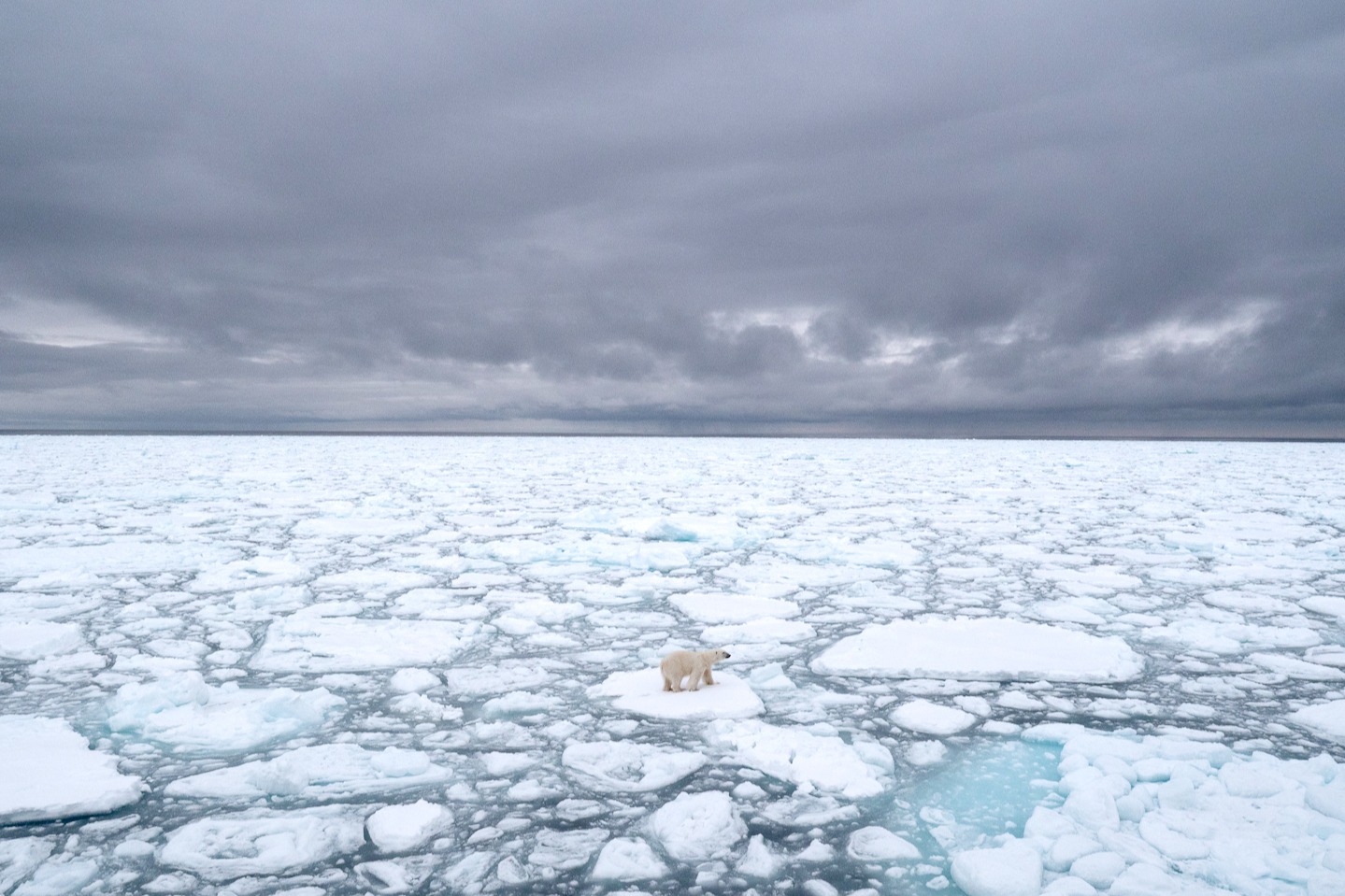55,000 beluga whales are on the move, and you can watch their migration live
Grab a front-row seat, it's rush hour for belugas.

Is the summer heat getting you down? Cool off with a virtual dip into icy Arctic waters and watch as tens of thousands of beluga whales frolic in the frigid sea. Starting Friday (July 15), the research vessel Delphi will broadcast a beluga whale livestream, direct from the Churchill River estuary where the river flows into Hudson Bay in northeastern Canada.
The livestream, produced in a partnership between Arctic conservation nonprofit Polar Bears International and explore.org, is in celebration of Arctic Sea Ice Day on July 15. The goal is to raise public interest in sea ice and increase awareness of its importance to the Arctic ecosystem.
"It is to the ocean what soil is to the forest," Alysa McCall, the director of conservation outreach and staff scientist at Polar Bears International, told Live Science.
Viewing belugas
The "beluga cams" go live each year as a group of approximately 55,000 beluga whales migrate to the shallow waters of Hudson Bay. The bay is locked in by ice in the winter, according to Stephen Petersen, director of conservation and research at Canada's Assiniboine Park Conservancy, which forces the belugas (Delphinapterus leucas) to head north into more open seas. But in the summer, the whales return. The whales may find that the sheltered waters of the bay offer protection from killer whales, Petersen told Live Science, while the estuaries provide hungry belugas with ample food. It’s also possible that the warm, low-salt waters from the Churchill River estuary may be beneficial for young calves that haven't developed a full covering of blubber, or for adult whales as they undergo an annual molt and shed their skin.
Two cameras aboard Polar Bears International's beluga boat Delphi (short for Delphinapterus, part of beluga's scientific name) provide different views of this thriving whale population: one from the deck and one from below the water’s surface, which also captures audio of the whale's chittering calls. The whales can make a variety of noises, ranging from clicking sounds to squawks and airy snorts.
Related: Lone beluga whale spotted 1,500 miles from home, and nobody knows why
Beluga whales are found throughout the Arctic and sub-Arctic. Some populations are endangered, but the one that migrates into Hudson Bay each year is a healthy size, Petersen said. One of the goals of the beluga cams is to maintain that population's health.
Sign up for the Live Science daily newsletter now
Get the world’s most fascinating discoveries delivered straight to your inbox.
"We want to build up monitoring so if threats appear or if that population changes we can see that before we get to a critical spot," Petersen said.
As part of that effort, Petersen runs the Beluga Bits citizen science project. Beluga cam viewers can collect screenshots of the whales they see as the Delphi livestreams the migration during July and August. Then, throughout the year, anyone can get involved with the project by helping to identify individual whales in the images at zooniverse.org. These classifications help scientists answer questions like whether the same whales return to the same places each year.

Saving sea ice
Polar Bears International will hold a live launch event for the beluga cams at 10:45 a.m. Eastern Standard Time (EST) on July 15. The organization will also be celebrating Arctic Sea Ice Day with a live event at 1:00 p.m. EST that will focus on why the ice is important.
"Sea ice is a critical habitat for Arctic species," McCall told Live Science. Walrus and seals use sea ice as a refuge to haul out on, seals give birth on sea ice, beluga whales use sea ice for protection from orcas. Every species in the Arctic, in the ocean, is supported by Arctic sea ice, because within Arctic sea ice grows algae which is like the plants of the north."
This algae forms the base of the food chain, McCall said, feeding fish that then feed belugas and other sea mammals.
However, Arctic sea ice cover overall is shrinking rapidly due to the warming climate, with recent years marking record lows in summer ice extent and experiencing thinning of old, multi-year ice. Near Churchill, Manitoba on the Hudson Bay, the ice historically broke up around July 15, McCall said. These days, the breakup typically occurs three to four weeks earlier than that.
But sea ice's sensitivity to climate change means that it can also potentially recover quickly if the climate cools, McCall said, which offers hope for a future chilly enough to keep polar bears, beluga whales and other Arctic denizens thriving.
"When we get our carbon emissions at a more sustainable level and we start moving to greener energy more broadly, we know that sea ice will bounce back," she said. "Actions you take now to reduce carbon emissions and switch to solar energy, wind energy and get these big corporations on board with being more sustainable, that absolutely positively impacts the ice which positively impacts all the animals that rely on it."
Originally published on Live Science

Stephanie Pappas is a contributing writer for Live Science, covering topics ranging from geoscience to archaeology to the human brain and behavior. She was previously a senior writer for Live Science but is now a freelancer based in Denver, Colorado, and regularly contributes to Scientific American and The Monitor, the monthly magazine of the American Psychological Association. Stephanie received a bachelor's degree in psychology from the University of South Carolina and a graduate certificate in science communication from the University of California, Santa Cruz.










